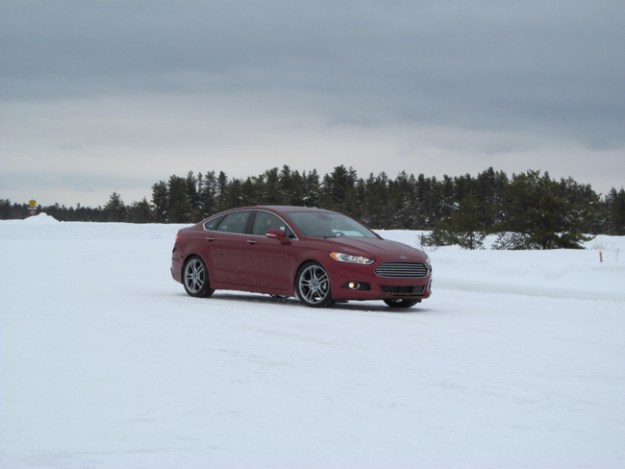 When most people ponder the inner workings of a car, they imagine mechanical bits working together to create motion. However, computers are doing an increasing amount of the work: sensors allow the engine, brakes, and other systems to talk to each other and make corrections before the driver even knows what’s happening.
When most people ponder the inner workings of a car, they imagine mechanical bits working together to create motion. However, computers are doing an increasing amount of the work: sensors allow the engine, brakes, and other systems to talk to each other and make corrections before the driver even knows what’s happening.
This tech is quite new, but new doesn’t always equal better. Is this really an improvement, or just an electronic nanny isolating the driver from the road? Is processing power really what it takes to keep a wayward car on the road?
That’s why Ford invited us to Michigan’s Upper Peninsula to test out its new all-wheel drive systems and related tech. It was time to pay a visit to the automotive nanny state.
We drove Fusion sedans and Escape and Explorer Sport crossovers on surfaces ranging from packed snow to solid, hockey-rink style ice. It’s where no sane person would ever willingly take a car, but that’s what we’re here for.
 Driving all of the wheels some of the time
Driving all of the wheels some of the time
Ford obviously isn’t the only carmaker with all-wheel drive, but the Blue Oval Brigade claims its system is more flexible and responsive than others. That’s because, most of the time, drivers won’t be using it.
If you’re cruising down the highway trying to get Ford Sync to read your texts, no power is sent to the rear wheels in the name of fuel economy. However, when the system detects what Ford calls “dynamic driving,” it leaps into action.
Ford isn’t the only carmaker to give the front wheels the lion’s share of the work, but this was the first time we were able to experience such a system without having to file an insurance claim afterwards.
Driving on slippery surfaces, the system was remarkably responsive. It was hard to tell what was going on at any given moment, because the car’s electronic brain constantly shifts power around, using everything from yaw rate to steering wheel angle input to calculate the ideal distribution.
That responsiveness can also be a bit eerie once you try to get a little more involved. The flip side of having an electronic safety net is that the car will intervene when it thinks you’re screwing up. We could feel the computers cut engine power and brake individual wheels at times.
If you’re just trying to get home, then, it works well. With the traction control on, all three vehicles we drove were very tractable, responding to control inputs in a predictable manner. Bottom line: Performance drivers may not enjoy it, but it kept us out of the snow banks.
 Jekyll and Hyde on ice
Jekyll and Hyde on ice
We also tested Ford’s Terrain Management, which is available only on the big seven-passenger Explorer. Using a rotary knob on the center console, drivers can adjust the Explorer’s behavior to suit different conditions.
Land Rover does a similar trick with its Terrain Response system, but instead of using it to conquer the wilderness, Ford has put the electronics to work creating a bigger margin of error on the road.
In the most restrictive “Grass/Gravel/Snow” mode, the throttle becomes laggy and the car seems to second-guess your every move. Turn the dial to “Sand,” and the engine growls as the throttle sharpens up. There are also “Mud/Ruts” and, for non-apocalyptic conditions, “Normal.”
Again, it’s uncanny how the electronics can change the behavior of the car. With the twist of a dial, the Explorer went from sedate to rowdy, It all depends on how much work the driver feels like doing.
Tech tackles physics
The impact of smart all-wheel drive and other electronic driver aids on regular driving is a story for another day, but after our time on ice we can say that they work as advertised. It may feel a bit unnatural to an experienced driver, but winter driving just got easier.




